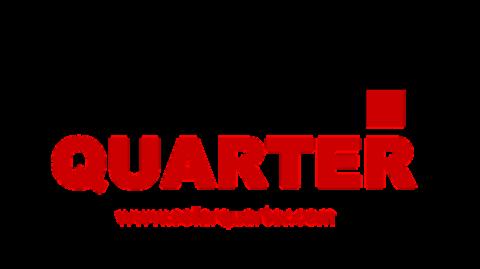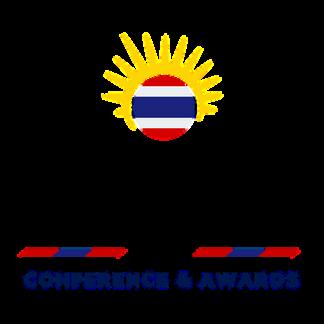South East




















































The Philippines may lead the show in the next few years because currently, that's where Solar makes the most sense
In the Philippines, the liberalized discom market opens more possibilities for fair competition
We started developing a 200 MW project in the Philippines

2022 is the year of new hopes, not only for us but for the world altogether As we are all moving forward towards post covid life, so is the Solar industry in general And I feel more than ever the climate movement has accelerated globally. There is more capital available today for sustainability than ever before Probably covid has helped to open a lot of very thick eyelids I see that the narrative has shifted from "sustainability versus the economy" to "sustainability at any cost" We have today customers that are willing to pay higher electricity bills only for the purpose of their net zero commitments Even though these are insignificant numbers, still, there is hope for change So let's call 2022 the year of hope
The Russia Ukraine nonsense helped the industry even further. I am honestly a little surprised that the same bunch of empty minded politicians who almost ruined the world's economies during covid have responded to the war even worse The sad thing is that because of their inadequate actions and reactions, mostly poor countries suffer. With this artificial inflation going on, we will see a tough and cold winter in Europe Especially with the ridiculous electricity bills This is good news for solar, but it's for the wrong reasons, so there is no reason for celebration
SEA is always a few years behind Europe and US in terms of the development of its solar industries Inevitably countries in SEA will be moving more and more towards Solar (and wind) Currently, however, SEA as a region is nearly down to absolute zero in terms of new Solar added. Vietnam is stuck on designing its solar free future, as its latest PDP8 draft suggests Indonesia's policymakers are lost in their own maze They don't seem to be able to figure it out, perhaps with the help of the strong coal lobby Malaysia has very slow capped capacity additions with its LSS program Singapore has long term plans, but you need to zoom in a lot on Google Maps in order to actually see where Singapore is, so even floating Solar is highly constrained due to the lack of space The Philippines may lead the show in the next few years because currently, that's where Solar makes the most sense with electricity bills the highest in the region. The Mekong delta countries are nowhere near optimistic forecasts Because of all the above, here
and there some rooftop projects are taking place, but the potential is way more Bilateral PPAs or CFDs are missing in SEA and hopefully, with the pilot in Vietnam, things will change quicker in that direction for the rest of the region
The Philippines High electricity cost, plenty of lands available Relatively good yield The new administration shows very positive signals towards renewables International banks are present There are power shortages due to the complexity of the energy mix. The liberalized discom market opens more possibilities for fair competition There are of course challenges as well, but not impossible to handle
We started developing a 200 MW project in the Philippines We will need approx 100 MW of Solar in Vietnam for our corporate customers.
Batteries Storage BESS Not sure if they have also other names for it But it's clear that once the technology cost resumes its downward trend, batteries will become mainstream A matter of a few more years really After which, a solar system without batteries will become obsolete in most parts of the world.
There is more capital available today for sustainability than ever before."


Recent business highlights for the region include opening our solar distribution warehouse and new office facilities, and a Wind Projects Representative office in Langson, Vietnam
Our collaboration with UBE has been a smooth journey and it has given us the confidence to work with more corporate partners
BayWa r e strives to help partners rethink their energy transition strategies and also to aid them towards best practices and solutions in their approach.
BayWa r e has been actively working on increasing its presence in the Southeast Asian region through setting up local offices and warehouses, building and providing renewable energy solutions, and working with local partners.
Recent business highlights for the region include opening our solar distribution warehouse and new office facilities, and a Wind Projects Representative office in Langson, Vietnam We also announced the development and sale of our first Floating Photovoltaic farm in collaboration with Ubon Bio Ethanol PCL (UBE) in Thailand; and in the Philippines, we were recognized and awarded Solar Company of the Year (Distributor) twice for our local team Our team is also growing year on year and we are a family of more than 125 people in Southeast Asia (more than 225 in APAC and 4,000 globally) We have 4 warehouses in the region for our distribution business and have sold more than 300 MW of inverters just this year, close to 100 MW of capacity built in SEA by our projects team and a number of ongoing solar rooftop projects with various corporations by our Energy Solutions team. We are currently developing wind and solar projects in all our key markets, which are Vietnam, Thailand, the Philippines and Malaysia at the moment
These are just some of the milestones we have achieved and celebrated within the past year and we are beyond excited for the opportunities that lie ahead of us
Southeast Asia is a key market for BayWa r e Based on research findings by PwC, this region’s energy demand is expected to increase by 60% by 2040, with energy capacity increasing at a CAGR of a cumulative 9 7% (excluding hydro) This presents vast business opportunities for BayWa r e , not only in terms of building new projects to contribute to the region’s renewable energy transition but also expanding business prospects for us.
We are currently developing wind and solar projects in all our key markets, which are Vietnam, Thailand, the Philippines and Malaysia at the moment."
Furthermore, in light of goals set during COP26, BayWa r e is also committed to providing assistance in enabling efficient energy transition processes for countries in the region
We are proud of what we are able to achieve thus far and are looking forward to announcing more successes for Southeast Asia and increasing BayWa r.e.’s footprint here.
The sale of our first floating photovoltaic in Thailand with UBE marks a key success for BayWa r e in this region, and it has definitely solidified our position in this segment in SEA as an advocate for the adoption of renewable energy solutions
This sale is significant for BayWa r e as this project is not only the first for us in Thailand but also our first floating solar project outside of Europe where we are the market leader for floating solar solutions
Our collaboration with UBE has been a smooth journey and it has given us the confidence to work with more corporate partners More importantly, the sale of the farm has also highlighted our capability in being a key renewable partner
We have also completed successful sales of projects in other countries, including Malaysia, Japan, Australia and Korea over the last years These sales serve as a testament to our expertise and we hope to collaborate with more corporations and government agencies to benefit our key stakeholders
The path towards COP26 goals should not be a walk alone partnerships are definitely pivotal in energy transition processes We believe that bringing together the expertise from different organizations and agencies will help to create processes that are effective and efficient Furthermore, the monetary support from such collaborative efforts also serves as a substantial factor in successful energy transition strategies.
Aside from companies like BayWa r.e., we believe that everyone has a fundamental role to play in keeping on track towards reducing carbon emissions and adopting renewable energy solutions
BayWa r e strives to help partners rethink their energy transition strategies and also to aid them towards best practices and solutions in their approach
Every country in this region has different strategies and end goals From a macro scale, however, we do observe that the region is well poised to attain its 23% RE target by 2025. This is given the current efforts that we see in these countries
On a micro level, there are still gaps in processes that need to be addressed Should every country be committed to reaching its own RE targets and work towards bridging these gaps, there would be potential for Southeast Asia to anticipate current targets to be surpassed

We do have new projects in the pipeline not only in the Asia Pacific but across the globe as well, for the upcoming year and will share these great achievements and business updates when the time is right
We are constantly looking out for new opportunities and have amazing teams working hard on the ground for our partners, helping to ensure consistent business momentum and growth for BayWa r e
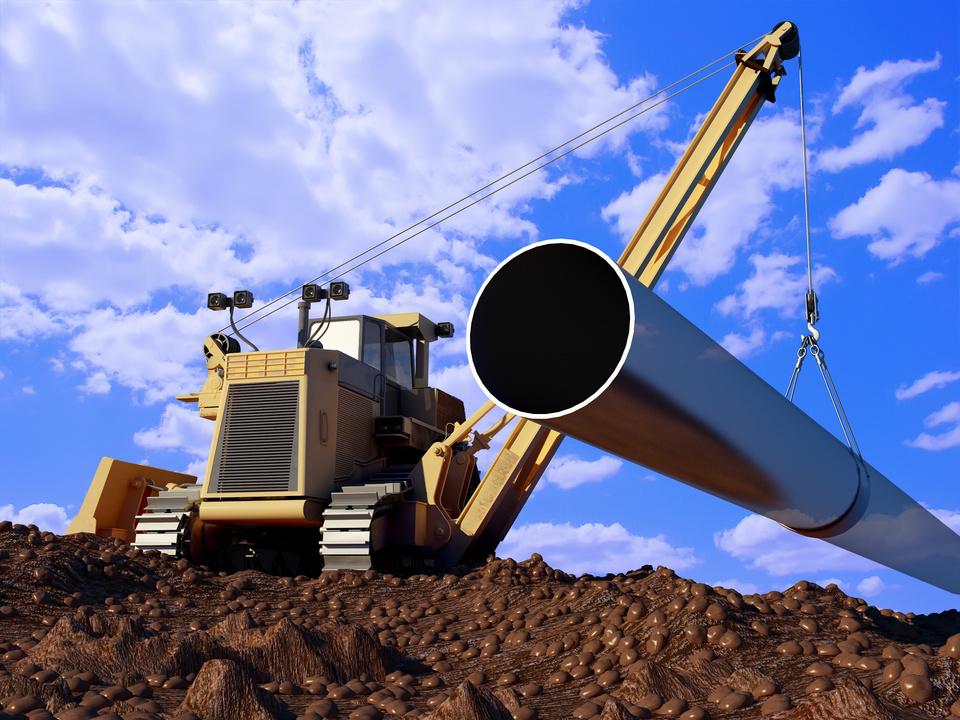
DO YOU THINK CONTINUOUS EFFORTS IN PARTNERSHIPS CAN AID ENERGY TRANSITION PROCESSES? HOW?
We are currently developing wind and solar projects in all our key markets, which are Vietnam, Thailand, the Philippines and Malaysia at the moment."

Along with SuperTrack, we also launched a new tracker Vanguard 1P, a 1 in portrait independent tracker with high flexibility to various complex terrains, fully compatible with ultra high power modules ranging from 400W to 670W+. TrinaTracker meets the most demanding requirements and our technology has been specifically designed to enable our customers to unlock and deploy upon ever increasingly challenging sites
2022 has been a promising year After Trina launched its patented ‘Trina Smart Cloud’, a unique intelligent monitoring and control tracking solution last year, we continue to innovate and launched our smart control system, SuperTrack earlier this May Shortly after, SuperTrack saw its 1GW milestone of orders globally. These projects are distributed in Asia, Europe and Latin America, in more than 10 countries Along with SuperTrack, we also launched a new tracker Vanguard 1P, a 1 in portrait independent tracker with high flexibility to various complex terrains, fully compatible with ultra high power modules ranging from 400W to 670W+. In the APAC region, we also recently installed our first trackers in India, Myanmar and Malaysia, and have recently signed multiple large utility deals with IPPs in Australia, New Zealand and Israel who prefer the free issue model and value Trina providing the industry’s only integrated package of intelligent single axis trackers and high power 600W+ bifacial modules
We want our clients to know that we are also targeting the behind the meter segment as well as utility scale, as trackers deliver the highest energy outcome per unit area, providing the greatest opportunity for businesses to maximize avoided energy purchases from the grid and enabling companies to take control of their energy OPEX while maximizing CO2 emissions which is beneficial from a CSR and ESG perspective Recently, we installed a high tech bifacial tracker on our 2P Vanguard tracker with our intelligent SuperTrack system for Elektrisola, a prestigious manufacturer of electrical cables one hour from Kuala Lumpur, in conjunction with our partners at Coara Solar, a leading installer of large solar systems in Malaysia. The site was in the middle of the jungle on top of a mountain which is a testament to how TrinaTracker can unlock the most challenging of sites
Trina also has a Solutions Team that can provide bundled module/tracker & FixOrigin/BoS/Inverter solutions with engineering services as a one stop shop to make the whole process as seamless as possible
The Vanguard 1P has exceptional reliability, excellent O&M Efficiency, lower BOS cost and High Energy Yield
Bi Damper system for unequivocal assurance of suitability in high winds
Optimized Torque Tube Design for tremendous torsional stiffness under wind induced dynamic phenomena
Patented Spherical Bearing improves terrain adaptability with three dimensional articulation
Advanced Stow Strategies and Integrated Alarm Strategy for completely autonomous protection of the plant in adverse weather conditions such as high wind, snow, flood and hail storms
A range of fully qualified Cleaning Robot solutions from trusted partners for expedient and cost effective module cleaning to ensure optimal plant performance
Trina Smart Cloud provides smart O&M with remote monitoring and control, component performance reporting and remote triage and diagnostic functionality

The solar industry’s only fully integrated Tracker & Module solution, providing the very highest assurance in terms of Compatibility and long term performance
SuperTrack Smart Tracking Technology Up to 8% energy increase in heavy cloud conditions and during backtracking on sites with uneven terrain with Supertrack Smart Tracker Control integration
The core principles of TrinaTracker surround high quality, exceptional performance and technology leadership."

As the name suggests, the SuperTrack Smart Tracking algorithm is an innovative smart control system that is equipped with unique features such as intelligent tracking and backtracking technologies, “Broadcast + Polling” communication strategy, and an extreme weather protection strategy The Smart Tracking algorithm increases in overcast days and other highly diffuse irradiance conditions while the Smart Backtracking logarithm reduces generation losses due to row to row shading in terrains with uneven slopes. Relying on the intelligent control of the controller, SuperTrack integrates multiple extreme weather protection strategies targeting strong wind, heavy snow, and hail Through this functionality, SuperTrack achieves a boost of the energy yield of up to 8% and therefore reduces the LCOE significantly
Links for reference: https://www.youtube.com/watch?v=ldXKOhI0Zt0 https://www youtube com/watch?v=TMcrifBDEfc
have executed our GoToMarket strategy and in readiness for the wave of large projects reaching implementation phase across the region, we’ve considerably upsized our services team from pre sales engineering support, project delivery and on site instruction & supervision, and after sales; all these to give our customers a best tracking design solution, a sound project quality, and easy O&M
Also, to supplement our internal 7GW per year production capacity in China, we have also decentralized our supply chain to overcome the current challenges from the high shipping costs and import duties We have qualified multiple local vendors in India to supply all structural tracker items and have started doing the same in other markets like Australia, Vietnam, South Korea, the Middle East and South America Trina has also recently launched the Vertex DEG19R 570 580W module which is a hybrid of 210 and 182mm cell technology that we find unlocks a truly optimal tracker configuration and therefore lowers both supply and BOS cost.
The core principles of TrinaTracker surround high quality, exceptional performance and technology leadership By offering the industry’s only integrated module and tracker solution, and by Trina being the first mover to the large format bifacial modules now ubiquitous in the industry, we deeply understand the complexities in accommodating these large modules in long strings in an unequivocally structurally safe fashion more than anyone else Moreover, with the tracker solution and warranty being backed by the Trina Solar parent (the industry’s most bankable brand), we provide unparalleled assurance to our customers that we will be around to support them for the entire asset lifetime
TrinaTracker is also only one of the very few tracker manufacturers to have deployed at a large scale in cyclonic regions in 2018 We installed 120MWp in northern Australia which has had zero wind issues ever since and in fact, was announced as one of the best performing assets on the grid in June this year
One only has to look at the damage caused by the recent Typhoon Noru in South East Asia to comprehend the importance of partnering with the right tracker supplier who has applied the requisite due diligence in wind testing validation and also has the balance sheet to satisfy the banks and lenders
TrinaTracker meets the most demanding requirements and our technology has been specifically designed to enable our customers to unlock and deploy upon ever increasingly challenging sites Traditionally, Customers typically faced issues such as difficult and expensive O&M, low reliability and wind stability and large power generation loss in trackers. TrinaTracker’s solutions tackle all these issues with our smart designs (Optimised design for large format modules in long strings, validated by wind tunnel testing with the world’s leading wind consulting firms RWDI and CPP), high tech software solutions (SuperTrack algorithm, Trina Smart Cloud) and low cost preventive and corrective O&M (robot cleaning partner solutions, TrinaCloud SCADA) which in turn results in low BOS costs, low O&M cost and high energy yield We are unique in the industry in being the only module manufacturer to provide an integrated PV and tracker solution.
For extreme high wind markets like the Philippines where trackers are more challenging to be financially viable due to the high cost to reinforce the structure, we are also pleased to offer our FixOrigin fixed structure solutions which can also be bundled in with our modules as a package, and has been rigorously engineered to resist the highest of winds and has imparted the value engineering learnings from the tracker to maximise bifacial performance and reliability
Following the acquisition and launch of our tracker business by Trina Solar, there is a very firm emphasis at the very highest levels within Trina on being to go to the tracker for the APAC region We are investing heavily in rapidly building the team and in R&D to take a leadership position in terms of technology and innovation so our customers can know how TrinaTracker can effectively help them achieve their energy goals such as increasing energy yield and lowering LCOE
With regards to LCOE, our modeling has shown that even in high land cost markets with lower direct irradiance resources like Peninsular Malaysia, our bifacial modules on tracker not only can reduce LCOE by more than 4% as compared to mono facial on fixed but through delivering same energy but with a 16% lower capacity system that means 16% fewer modules, footings, DC cable, combiner boxes, trenches and so forth to procure, ship and install, ultimately resulting in a 6% reduction in overall CAPEX As such, and in line with predictions from analysts like IHS, we expect tracker penetration in APAC to start growing precipitously in the coming years, especially as module pricing is forecast to remain elevated

At the same time, in the high wind speed areas of Asia Pacific, we will continue to promote our FixOrigin solution, combined with our high rated power and longer string module solution to provide
In the past two years, we have been concentrating on fully integrating T i T k i t th ider Trina Solar organization and launching our er structure (Agile, Vanguard 1P/2P), FixOrigin, system, Trina Smart Cloud platform; As we
WHAT MAKES TRINA TRACKER SOLUTIONS UNIQUE AND THE BEST IN THE INDUSTRY?
WHAT NEW PRODUCTS AND TECHNOLOGIES IS TRINA CURRENTLY WORKING ON? ARE ANY NEW PRODUCTS LINED UP?
In mid August, the world’s leading independent advisory, testing, inspection and certification organization, UL (Underwriters Laboratories), published a bankability study report on Trina Solar’s Vertex series modules Twelve models of Vertex modules were shown to have excellent performance in reliability, compatibility and lowering LCOE and a high standard quality management system
In all dimensions of the bankability study, UL reviewed Trina Solar’s products based on test results, reports and certifications from accredited third party test laboratories The analysis, based on strict examination of product value and a comprehensive understanding of the entire industry and global technology resources, is widely recognized by international investors and owners of solar plants and provides authoritative technical support for project financing and operation
In the inspection of the reliability of Trina Solar’s Vertex series modules, UL reviewed the key specifications of the products, as well as third party certifications and test reports from accredited laboratories such as TÜV, PVEL, RETC and CTC The latest study looked at junction box, mechanical reliability, encapsulation, frame and ARC coating, reliability, transportation, delivery and installation of modules. UL concluded that the modules reviewed 0complied with normal safety standards and offered superior performance

When UL investigated the compatibility of inverters in the market, it found that the Vertex Series PV modules are compatible with both utility scale inverters and string inverters
Vertex Series PV modules are compatible with utility scale inverters in terms of short 0circuit current of the modules by selecting the right configurations to match the MPPT specifications of high current inverters, providing flexibility to meet project requirements
Due to high power modules becoming mainstream modules, string inverter manufacturers have also upgraded their products Each MPPT input can take two strings with total input current at 45A. Trina’s Vertex Series module’s operating current at approximate 17A is compatible with the common string inverter manufacturers
Trackers are commonly used in utility scale PV projects When the Vertex series modules with trackers are used, Trina Solar’s bifacial dual glass modules effectively increase system energy yield by 5% to 30%.
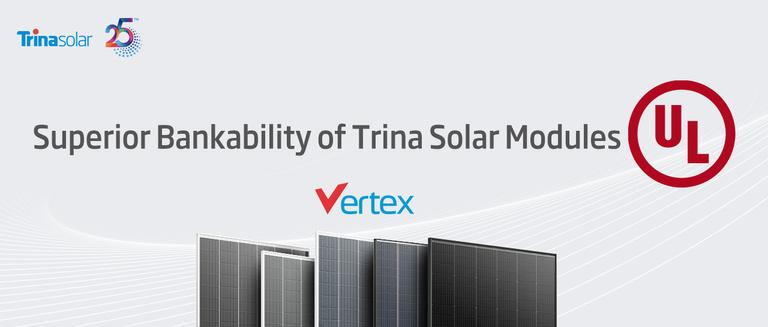

UL reviewed the LCOE reports by many third parties, including Black & Veatch, DNV, Enertis and Fraunhofer ISE, and found that CAPEX and LCOE are lower than is the case with when generic module types are used for the same plant configurations. For instance, compared with the 182 540W reference module, the Trina Solar Vertex 0670W series module can reduce LCOE by 4 1%, and BOS costs by up to 6%
During a visit to Trina Solar’s Yancheng factory in March, UL reviewed the company’s quality management system and quality control plan. The quality control process flow chart presented an overview of the entire process, demonstrating standardization, advancement and intelligence UL rated the overall quality control regime favourably
Trina Solar has a complete quality control system that includes data collection, data analysis and risk warning, covering the entire process of data from customer order generation to material, performance, shipment and after sales quality feedback based on a cloud database
UL said that during the factory visit most of the key manufacturing process was fully automated, with minimal human interference, such as high speed multi busbar soldering, PV cell layout, lamination, junction box installation and inspection and packaging, to name a few Even visual inspection is done by artificial video intelligence to minimize human error. UL viewed the entire automation of the manufacturing process positively in terms of quality management.
In addition to UL’s bankability study report, Trina Solar has also been ranked a Top Performer in the 2022 PV reliability scorecard by PVEL Bloomberg NEF has given it a 100% bankability score in each of the past six years, and the PV ModuleTech Bankability report published by PV Tech has given it an AAA ranking in 2022
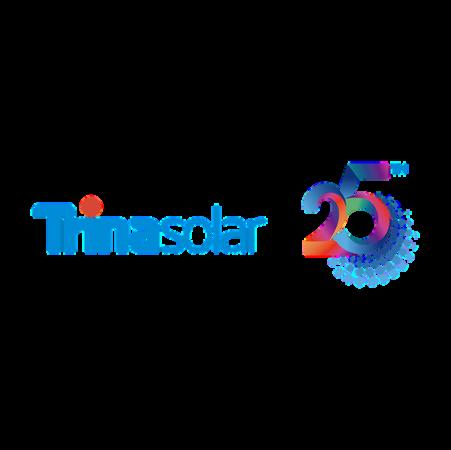
Trina Solar delivered more than 100 GW of solar modules worldwide in April and was ranked the second largest module supplier in 2021 and the first quarter of 2022 Its cell production capacity is expected to reach 50GW+ and its module capacity 65GW+ this year, a Trina Solar financial report says Yancheng manufacturing base delivers 17GW of modules and 19GW of solar cells a year
The UL report also mentioned that in terms of financial health, the company is observed to be strong
In terms of product value, technological innovation and financial performance, Trina Solar has obtained wide technical and brand recognition from renowned independent institutes worldwide, demonstrating the strong confidence that the PV market has in Trina Solar.
LCOE significantly reduced by 4.1%
Intelligent QC process to ensure product reliability and continuity
A promising future ahead
TrinaTracker, a business unit of Trina Solar Ltd (SHA:688599), is a global solar tracker solutions leader focused on providing “state of the art” designs tailor made to terrain characteristics and weather conditions TrinaTracker is entirely focused on quality and innovation to provide its clients with high technology solutions that achieve the highest energy yield, lowest BOS costs and LCOE

TrinaTracker Vanguard 1P is a 1 in portrait independent tracker with high flexibility to various complex terrains. Vanguard 1P adopts the 1P single row design and includes technology advantages that guarantee higher reliability, more significant power generation, optimised balance of system (BOS) cost and enhanced adaptability
The Vanguard 1P series is fully compatible with ultra high power modules ranging from 400W to 670W+, further enriches the tracker’s application scenarios and upgrades TrinaTracker solutions. An exquisite combination of technology and quality, the Vanguard 1P is developed by an experienced international R&D team to meet market demands in all application scenarios
Fully compatible with ultra-high power modules ranging from 400W to 670W+

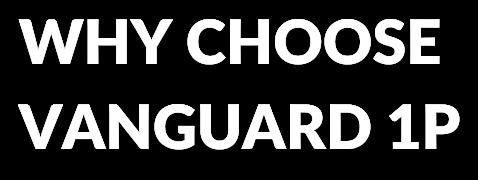
130mm large R corner square beam structure to ensure structural safety
Bilateral damper system that improves system rigidity and stability
A comprehensive wind tunnel test performed by CPP
Trina’s self developed smart controller system provides multiple communication methods, power supply modes, grid connections and extreme weather protection strategies which improve system stability and multi scenario adaptability

SuperTrack tracking technology that increases power generation by 3 8%; The patented SuperTrack is featured with two algorithms, among which, the Smart Tracking Algorithm is used to optimise energy production in high diffuse irradiance weather conditions, while the Smart Backtracking Algorithm optimises energy yield when shading is caused by the installation of arrays in irregular terrains
Patent spherical bearings technology increases terrain adaptability and relieves structural stress and acclimates to other terrain changes
Intelligent cleaning robot solution to ensure maximum energy yield

Trina Smart Cloud tracking solution provides smart O&M with remote monitoring and control, forecast components performance and recommendations to reduce costs and increase efficiency
With Vanguard 1P, TrinaTracker once again proves that its core DNA is characterised to be pioneering in quality and novelty The company continuously focuses on offering high technology solutions that achieve the highest energy yield, the lowest balance of system (BOS) costs, and levelized costs for its clients TrinaTracker is the only company in the solar market that offers modules, trackers and intelligent monitoring from a single source More information about the TrinaTracker Vanguard 1P can be found on https://pages trinasolar com/vanguard 1p html
Inspired by the carbon neutrality trend worldwide, a new green energy network based on digital innovation is gradually taking shape. GoodWe, with the vision of driving the world’s smart energy future, is actively expanding its production capacity and pursuing technological innovations
In August this year, GoodWe held the commissioning ceremony for its phase II manufacturing base in Guangde, Anhui province of China Covering an area of around 46,000 m2, the new factory mainly focuses on the production of solar inverters, energy storage products, and PV building materials This expansion is expected to bring the company’s full capacity to 30GW

As a pioneer in clean energy and environmental stewardship, GoodWe also tries to build the base into a “smart low carbon demonstration zone” in an all around way A 2 8 MW grid connected solar PV system has been installed on the roof of the base by now, with 12 sets of GoodWe HT 1500V Series (225 kW) inverters connected. And these numbers will see an increase in the near future In addition, with sustainability anchored in our minds, all the cabin or sink of these inverters is made of aluminum magnesium alloy which can be 100% recycled or reused

Consequently, the project can provide 2 8 million kWh of electricity for the manufactory base every year, which is equivalent to saving 900 tons of standard coal and reducing 2,247 tons of carbon dioxide emissions every year, ensuring that the base is constructed and operated in a green and low carbon manner With the continuous expansion of the rooftop PV, the base is determined to realize green production to the greatest extent.
By extensively using GoodWe PV building materials in constructing facilities such as the canteen and zero carbon sunroom within the manufacturing base, GoodWe has once again demonstrated its ambition in making every building generate electricity In addition, DC & AC charging stations and a solar carport integrated with the “solar storage charging” system are also built to help cut down carbon footprint
“With phase II of our Guangde manufacturing base put into production, the production capacity of GoodWe inverters and other products will witness an alarming increase This expansion represents an exciting milestone for GoodWe, giving us more confidence to meet challenges brought by supply chains and changing trading conditions,” said GoodWe CEO and founder Daniel Huang “More importantly, the design concept of our new base has also well captured the sustainability philosophy of GoodWe. We will continuously spare no efforts to lead the way in promoting the global energy transition and creating a sustainable future for the earth, mankind, and future generations.”

GoodWe is a world leading PV inverter and energy storage solutions manufacturer and is listed as a public limited company on the Shanghai Stock Exchange (Stock Code: 688390) With an accumulative delivery of more than two million inverters and installation of 35 GW in more than 100 countries and regions, GoodWe solar inverters have been used in residential and commercial rooftops, industrial and utility scale systems and range from 0 7kW to 250kW GoodWe has more than 4,000 employees situated in over 20 different countries and is regarded as the Global Top 3 storage inverter supplier by Wood Mackenzie in 2021. For more information, please visit goodwe com

GoodWe, with the vision of driving the world’s smart energy future, is actively expanding its production capacity and pursuing technological innovations."
The increase in the share of renewable energy in the generation mix will not only result in carbon footprint reduction but will also lessen the dependency of the Philippines on imported fossil fuels. Last June of this year, the DOE successfully held the first ever Green Energy Auction Program (GEAP) where more than 50 developers expressed interest."






As far as challenges are concerned, the industry was not spared by the global economic crisis brought about by COVID 19 and the Russia Ukraine conflict Most of the components for solar farms are imported solar panels, inverters, mounting structures, and cables. These components comprise around 50% of the total plant capital expenditure and therefore impact the overall business cost We can also consider the depreciation of currencies like the Philippine Peso as it also increases the cost to build solar power plants. This is further aggravated by an increase in prices of the components themselves as the price of polysilicon has also increased in the last three years, including the cost of aluminum and copper
In the Philippines, the target of the Department of Energy (DOE) for a 50% Renewable Energy mix in the total generation capacity by 2040 brings opportunities for developers to invest in solar, wind, hydro, and other indigenous sources The increase in the share of renewable energy in the generation mix will not only result in carbon footprint reduction but will also lessen the dependency of the Philippines on imported fossil fuels Last June of this year, the DOE successfully held the first ever Green Energy Auction Program (GEAP) where more than 50 developers expressed interest Around 2,000MW were auctioned for solar, wind, and hydro across the country where PAVI Green, one of the fastest growing RE suppliers in the country, was able to successfully participate by winning a bid to supply 40MW in Naga, Camarines Sur. Furthermore, the industry also remains to be optimistic particularly after the Energy Regulatory Commission declared that it will review the current Competitive Selection Process (CSP), which should open more opportunities for developers to participate in bids to supply the energy requirements of the distribution utilities and electric cooperatives nationwide.
AUTHOR:
 VIT VATANAYOTHIN
PARTNER, BAKER MCKENZIE BANGKOK
VIT VATANAYOTHIN
PARTNER, BAKER MCKENZIE BANGKOK

The Thai renewable energy market will be active again soon. The Energy Regulatory Commission of Thailand ("ERC"), the regulator of the power sector, has officially issued a set of regulations ("New RE Quota Regulations") setting out the framework, terms, conditions and timelines for the Thai state utilities to purchase electricity from renewable energy sources under a Feed in Tariff ("FiT") scheme from renewable power plants during the period between 2022 2030 ("New RE Quota") for 5,203 MW in total ("New RE Quota"), in an attempt to increase the country's renewable energy proportion This purchasing program under the New
Quota Regulations has re opened opportunities for both local and foreign investors to grow their aggregate generation capacity and market share in the Thai renewable energy market, which has been paused for many years

below are the key elements contemplated by the Draft New RE Quota Regulation.
State utilities will purchase electricity generated from small power producers ("SPPs") or very small power producers ("VSPPs") utilizing (in order of priority): (i) biogas (from wastewater/waste); (ii) wind; (iii) ground mounted solar coupled with battery energy storage systems ("BESS"); and (iv) ground mounted solar

Participants must be juristic entities incorporated under Thai law or registered in Thailand and must not be government agencies or state enterprises
As for a company incorporated in Thailand, it is subject to the following foreign element restrictions: foreign shareholders are allowed to hold up to 49 percent of total shares in the company tendering for the sale of electricity under this New RE Quota ("Tenderer"); the number of foreign shareholders must not exceed half of all shareholders of the Tenderer: foreign directors are allowed to take up the position not more than half of all directors of the Tenderer; directors authorized to execute any documents on behalf of the Tenderer must hold Thai nationality.
Tenderer is required to submit documents demonstrating to the state utility authority the readiness of the site; technology; fuel (equipment and supplies); financing; and work plan.

Any Renewable Energy Certificates (RECs) derived from the projects under the New RE Quota must belong to government agencies
EGAT, PEA and MEA will accept tenders for the sale of electricity generated from wind farms; solar farms; solar farms with BESS; and biomass, from the Tenderers during 4 to 25 November 2022 A preliminary announcement of Tenderers which are qualified for the bottom line of technical aspects will be made by 18 January 2022 and a formal announcement of the awarded Tenderers will be made by 15 March 2022
After the Tenderer has become the awarded Tenderer, and then enters into a power purchase agreement with the EGAT, MEA or PEA, the Tenderer has full legal rights to develop; build; own; operate; and maintain renewable energy projects under this New RE Quota, subject to obtaining permits and licenses required by applicable law.
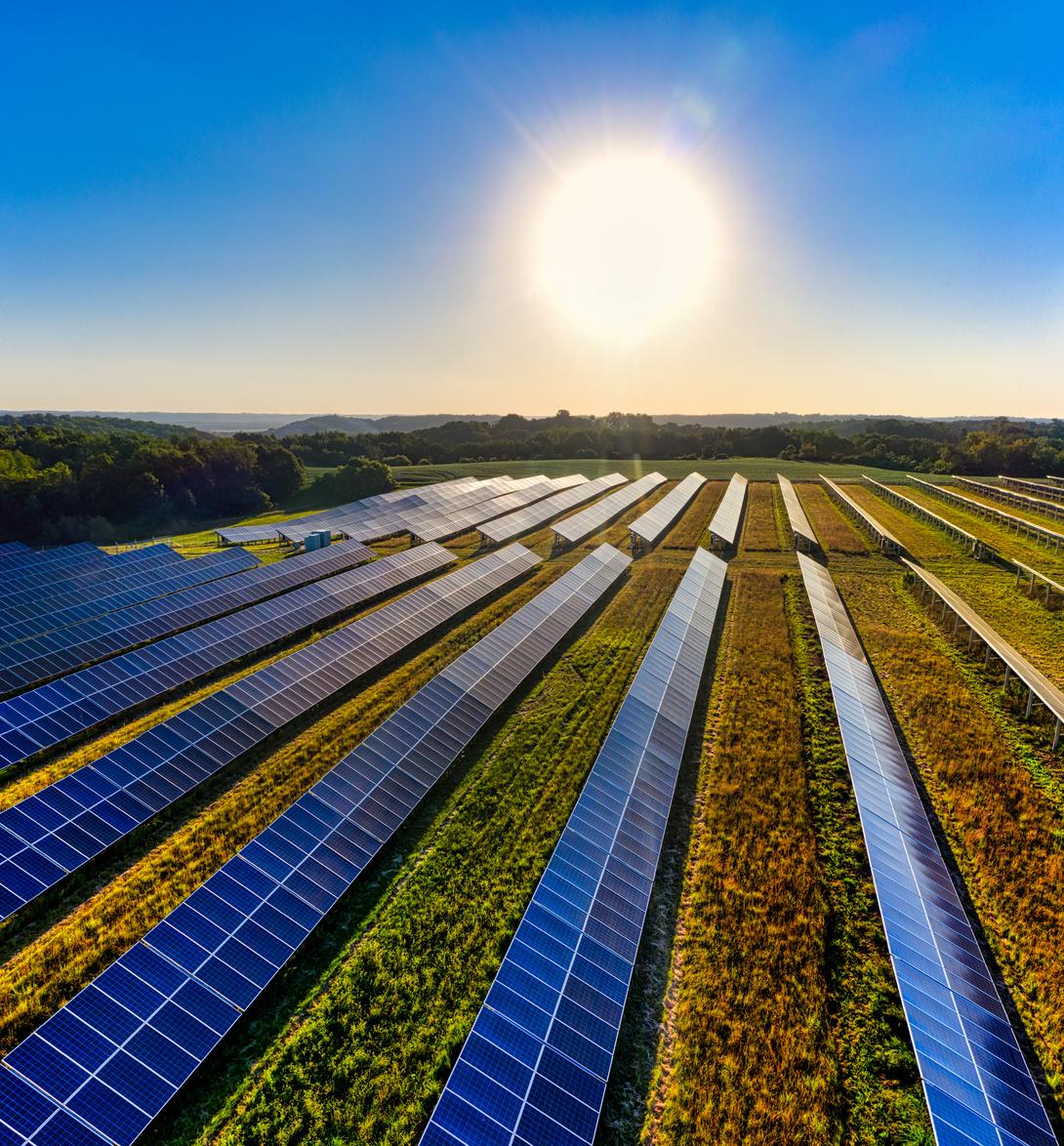


Thailand has a population of around 70M people, the 20th largest in the world(1) just in front of the UK and France, and an increasing thirst for energy as the country modernizes It has modest and declining reserves of gas, oil and coal, no nuclear plants and imports 14% of its energy needs(2) Renewable energy’s (solar, onshore wind, geothermal, and biofuels) share of the energy mix is growing slowly and currently meets only 10% of overall requirements Generally, there is a need to improve Thailand’s energy independence and carbon footprint through the installation of additional renewable energy capacity
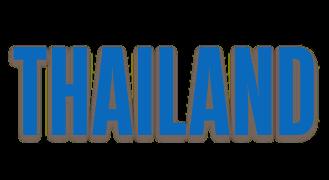
Most 69%(3) of the 3.6GWp current solar capacity in Thailand comes from grid tied ground mounted sites, however, new grid tied sites have largely dried up since 2017 following the closure of the previous Feed in Tariff (FiT) scheme in 2016 Since then the Thai solar PV market has been fueled by behind the meter private power purchase agreements (PPPAs) where solar directly feeds into large facilities like factories Typically these projects are relatively small (<3MWp) and need extended time in project development (financial close, necessary permits, etc) Therefore PPPAs are not on their own a mechanism to quickly ramp up renewable energy’s share in the energy mix; it is not about the tariffs being too low, it is about having access to the instant demand from the grid
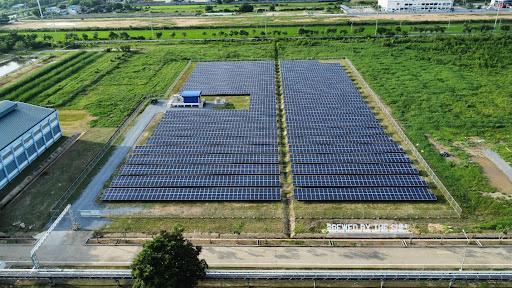
The Thai Energy Regulatory Commission (ERC) clearly sees this and as part of Thailand’s broader 2018 2037 Power Development Plan, they announced on the 30th September 2022(4) a new FiT scheme with phased commissioning from 2024 to 2030 A total maximum allocation of 5 2 GW capacity will be split between solar PV, solar PV with storage, onshore wind and biogas Solar PV & solar PV with a storage account for the majority of the scheme with around 65% of overall capacity (3 37 GWp) This will help to approximately double the current installed solar capacity in Thailand
The deadlines under the FiT are quite tight; applications are open from 4th to 25th November 2022 and those not expecting the ERC announcement might have been taken by surprise Whilst the technical requirements for the submission are relatively straightforward, one key criteria for bidders is the need to have majority Thai ownership and majority Thai directors For foreign companies wanting to bid this is a hurdle given the tight timelines; they need to quickly partner up with a local company or representative or wait to buy the project on the (more expensive) secondary market The proposed FiT rate for solar PV is reasonable (2 1679 THB/kWh or 0 057 USD/kWh) and guaranteed for 25 years and should allow for full capacity allocation. The ERC will announce successful projects by 15th March 2023
Moss Energy (www mossenergy co) provides a full range of EPC and O&M services for solar PV in Thailand including in house permitting and licensing. We are a Thai company with a majority of Thai directors so we can also assist foreign investors wanting to participate in this FiT scheme
https://en wikipedia org/wiki/List of countries and depende ncies by population https://www.erc.or.th/en/annual report/3730 (page 14) https://www erc or th/en/annual report/3730 (page 22) https://www erc or th/th/event news/2649



In 2022, the Office of Governmen Document No 229/VPCPCN to the M Vietnam for the next steps in up regarding the implementation of the purchase agreements (DPPA) betwee renewable energy power generator c participating power consumers and d in principle contract for the purch

The DPPA is a power purchase arrangement in which off takers are power buyers and major power consumers This is a growing trend worldwide where private businesses are purchasing electricity directly from generators, instead of directly buying it from the state utility offtaker This kind of agreement (e g a contract for differences (CfD) or a virtual PPA in principle agreement) must be submitted as part of registration application documents

The new draft DPPA decision proposes synthetic DPPA mechanisms (also called financial, virtual direct, or corporate PPAs) to support off site renewable energy projects in Vietnam A pilot program of up to 1,000 MW was proposed It will be implemented between 2022 and 2024

The Prime Minister's decision in this draft made significant improvements to the transaction and tariff structures, as opposed to the MOIT circular A key new change proposed by the MOIT is that instead of the VWEM spot market price plus DPPA charges as proposed under the previous draft MOIT circular, the power consumers will take and buy power from EVN/PC at the retail price as per the new draft Generators/developers and major power consumers who wish to participate will be required to prepare and submit their registration applications via the electronic information portal within 45 working days from the date of the MOIT's opening of the pilot DPPA program's electronic information portal Within 270 days of the announcement of the pilot DPPA program's list, the participating generation companies (GENCOs), must have a commercial operation for their power stations to be eligible for participation in Vietnam's wholesale electricity market

The Ministry of Industry and Trade (MOIT) submitted a second proposal to the Prime Minister on 21 July 2022 in relation to the policy for "transitional wind/solar energy projects" that have been completed/invested but not yet achieved the commissioning date to be eligible for Feed in Tariff (FiT) The MOIT stated that it had already submitted two options/proposals to the Prime Minister in relation to the solar/wind tariff. These were (i) direct price negotiations between solar/wind generators and EVN based upon a tariff bracket issued by the MOIT and (ii) price tender whether EVN will tender for purchasing power from solar/wind projects for 3 years, according to a MOIT price bracket




In 2022, the Office of Government of Vietnam issued Document No. 229/VPCPCN to the Ministry of Industry and Trade (MOIT) of Vietnam for the next steps in updating the draft regulations regarding the implementation of the pilot program of direct power purchase agreements (DPPA) between major power consumers and renewable energy power generator companies. The draft states that participating power consumers and developers must sign a binding in principle contract for the purchase and sale of power from projects This kind of agreement (e g , a contract for differences (CfD) or a virtual PPA in principle agreement) must be submitted as part of registration application documents.
Recently, the Government of Vietnam issued Decree No. 06/2022/NDCP on greenhouse gas reduction, ozone protection and carbon market development for Vietnam ("Decree 06") Decree 06 forms part of Vietnam's climate change adaptation policies, which are generally covered under the 2020 Law on Environmental Protection (LEP).
Decree 06 includes a roadmap to reduce GHG emissions, requirements for certain entities to conduct GHG inventories and make plans for GHG reductions, important measures for mitigating the misuse of ozone depleting substances and an ambitious plan for setting up the Vietnamese domestic carbon market
The Philippine Department of Energy (DOE), plans to host the first round of bidding on 2,000 MW of renewable capacity in the Green Energy Auction Program The country plans to award 1,260MW of solar capacity (1,290 MW per Luzon, 260MW in the Visayas and 100MW per Mindanao), 380MW of wind (3,360 MW per Luzon and 20MW each in the Visayas), 230MW of biomass (120, 60, and 50 MW respectively in Mindanao and Luzon) and 130MW of hydropower (80, 50, and 80 MW, respectively, in Mindanao) The proposed tariff for solar technology is PHP3.6248/kWh (US$6.9c/kWh); the wind is PHP5.2887/kWh, US$10c/kWh; biomass at PHP5 5480/kWh (10c/kWh); run of river hydro is PHP5 8705/kWh (11 2c/kWh)

VIETNAM’S NEW DECREE REGARDING GREENHOUSE GAS REDUCTION, PROTECTION OF THE OZONE LAYER AND DEVELOPMENT OF THE CARBON MARKETS
THE PHILIPPINES PREPARED FOR AN AUCTION OF 2 GW OF RENEWABLES IN 2022


The relatively young power infrastructure in Southeast Asia, especially gas fired, is attracting a lot of capital Nearly a third (or more) of the 90+ gigawatts of facilities in Southeast Asia are within their operational life spans, with about ten years remaining on average. These facilities will be attractive to investors who want to increase their returns and revenue and prolong their lives
To improve grid reliability and resilience, one approach is to balance the variability of renewable energy with gas fired power generation. A second, more effective option would be integrating energy storage technologies like lithium ion battery energy storage systems (BESS) with large scale solar plants

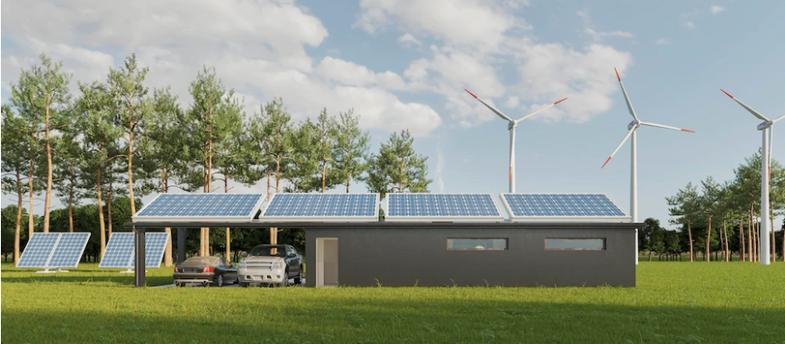
Grids are becoming more difficult to manage than ever. Load is still variable, just as it was in the past, but generation is also changing Grid operators face real challenges today and tomorrow There are increasing amounts of distributed energy resources, and both new variable generation (e g Renewable energy and variable load (e g electric vehicles) are increasing the demand on the grid. The grid is under strain from new variable loads (e g , electric vehicles) and renewable energy When large loads from industrial customers are brought online, or solar generation is interrupted by cloud cover, the grid can become out of balance The grid's nominal operating frequency can be affected by the increase in generation and load imbalance To correct grid imbalance and return the grid to normal frequency operation, it is necessary to have flexible generation sources that are fast and reliable
The addition of BESS to large scale solar plants can provide grid frequency control with rapid response This is possible by using milder ramp rates, shorter run time and fewer stops and starts for the fleet BESS can be used as a black starting resource to strengthen the grid against severe weather events such as storms After a power system has suffered a total collapse, a black start is the restart of the system.
The capital cost of lithium ion battery systems is decreasing year after year, just like solar and wind technology BESS costs are falling because consumers demand electric vehicles and mobile devices They share the same lithium cells and can benefit from the economies of scale of these two large markets Battery storage costs are approximately 75 percent lower than they were ten years ago and will be half the price by the end of the decade
Base load generators' capacity factors (the power produced per unit of the generator's maximum potential) decrease as more variable renewable energy is added to the grid This leads to revenue loss over time, and lower efficiency which in turn leads to higher fuel consumption and higher emissions This can be reduced by integrating BESS.
The BESS with Renewable energy can participate in ancillary markets for grid support This includes frequency regulation, power quality services, frequency regulation and primary and second frequency reserves. These additional revenues are available as local electricity markets permit
It is clear from recent market trends that both p and n type solar cell efficiency will increase But it is essential that you understand the basics of these cell types from an investor's or end user's standpoint The base of a solar cell with a p type type semiconductor is present in the p type cell, and vice versa for n type cells This is because the doping of wafers (both mono and multi ) results in a difference in base This is required to make a semiconductor junction that conducts current flow The wafer is either doped with phosphorus (leading to an n type wafer) or boron (leading to a p type wafer)

P type cells have economies of scale This is due to the demand for p type solar cells in the market Because the whole value chain, from sand to solar cells, is optimized for p type solar cells, this is a huge advantage.


P type cells have cost competitiveness to its competitor The current market situation may make the initial cost a significant determining factor, giving p type an advantage.
The main benefit of an n type cell is its efficiency The n type cell can produce more power and thus generate more revenue.

They are also less susceptible to module degradation compared to P type solar modules This allows a longer life expectancy for modules made with such cells They are also less susceptible to impurities than p type cells





The thirdly levelized cost for electricity (LCOE), which is the ratio of total energy cost to the plant's life expectancy, can be quite significant. It may even exceed the plant's return on investment (ROI) in some cases
PERC, like other cell technologies, is available in both p and n type There are still many challenges to be overcome, the most important being Light Induced Degradation and Light enhanced Temperature Induced Degradation for p type cells LID and LeTID have been shown to significantly reduce the power output of the PERC module It takes a lot of effort to improve the few practical ways that LID &LeTID can be eliminated However, N type PERC cells are LID &LeTID free.

